Islamic Society of Shiraz University held an exhibition on the Mujahedin Khalq Organization (MKO) in Fajr hall of the campus from November 4th until November 13th.
The exhibition included films, banners, posters and articles on the substance of the cult, its violent past and its current approach in today world as well as Q&A meetings with defectors of the cult and university professors.
The event was welcomed by students and scholars. Former members of the MKO were constantly present in the gallery hall to discus students’ questions. Visitors were eager to know who the mujahedin Khalq were, how the members were fist recruited by the group and what motivated them to leave the group. Trying to reveal cult-like nature of the cult and its threat against the international community, they described how they were victims of a full-scale manipulative system under the order of Massoud and Maryam Rajavi.
Ebrahim Khodabandeh was one of the cult defectors who was received at Shiraz University to enlighten the minds of students who rarely had any idea of the MKO. He described cult-like techniques Rajavi uses to manipulate his members in order to achieve power in Iran.
As experts believe that the threat of cults is a crucial issue in the world today, the objective of the organizers of the exhibition was to illuminate the minds of their audience about the danger posed to the victims of Rajavi’s destructive cult and the risk of involvement of any ordinary person with mind-control cults including the MKO.
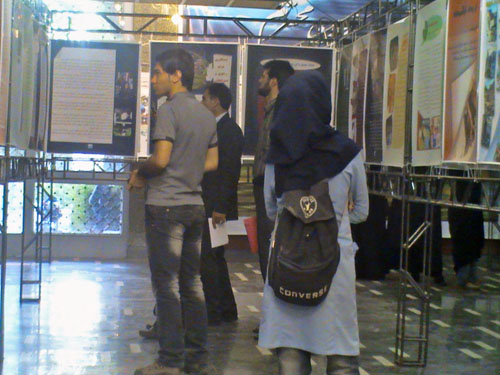
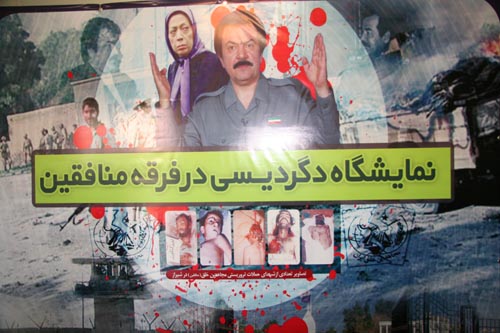
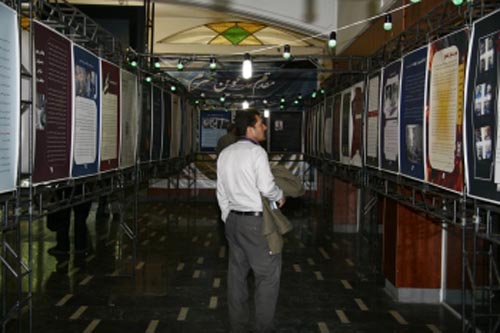
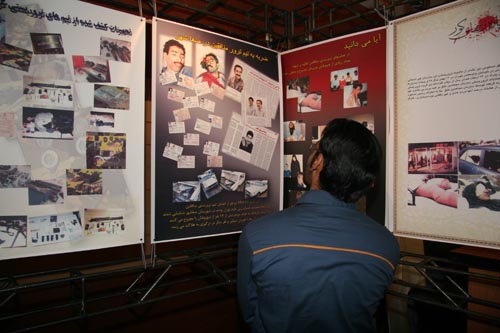
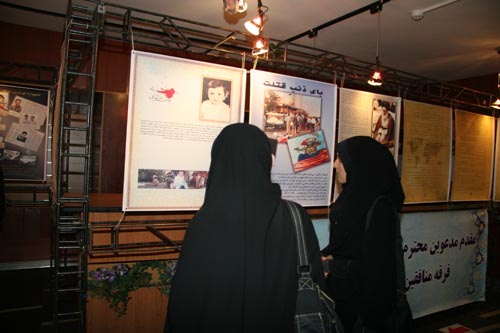
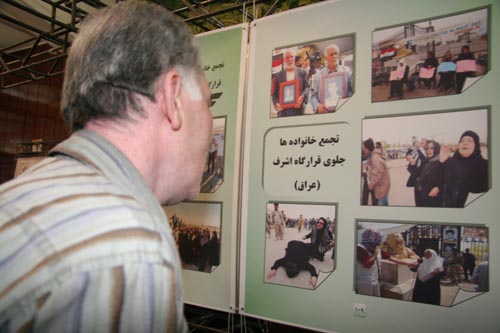
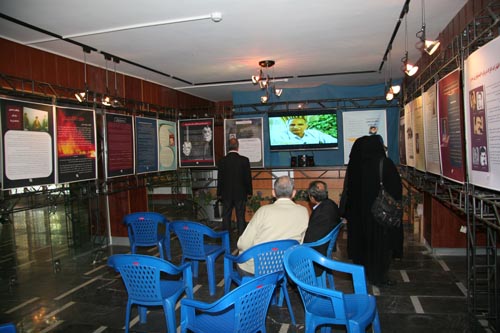
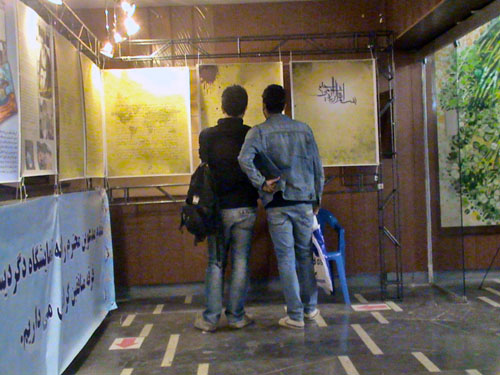
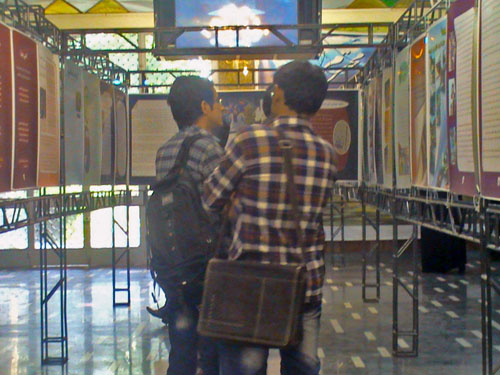
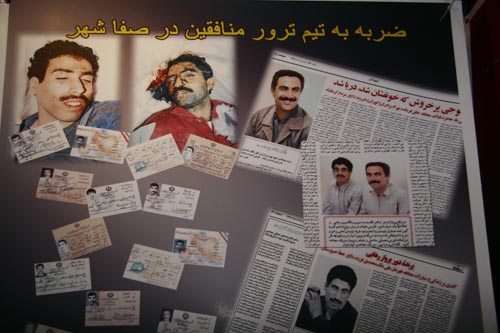
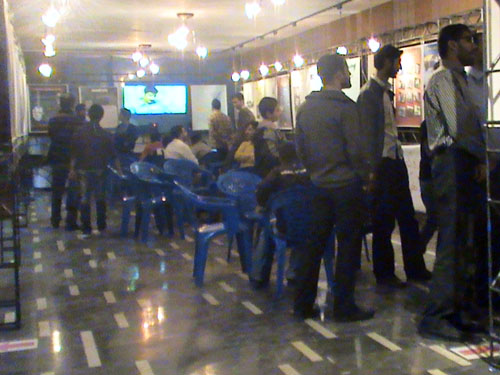
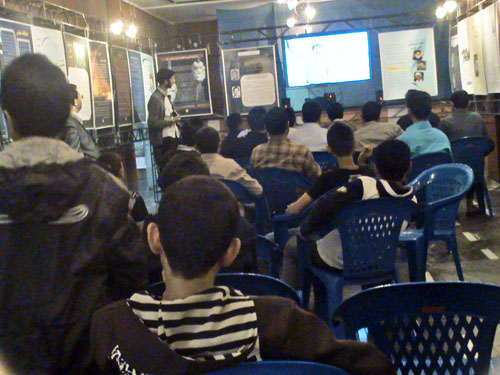
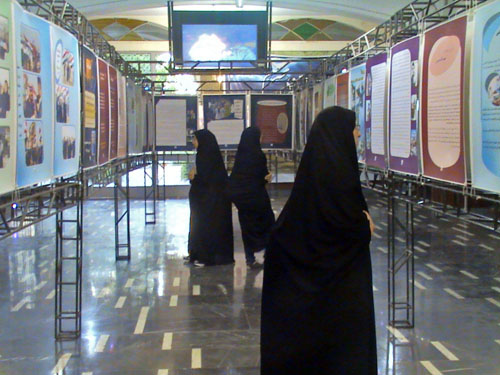
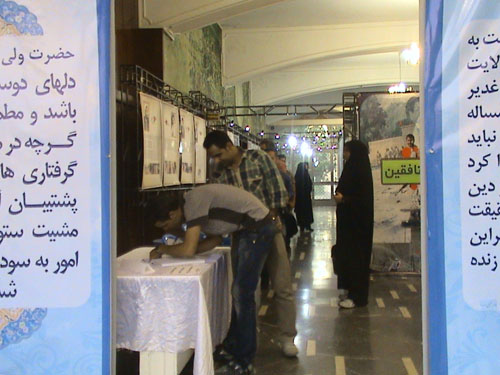
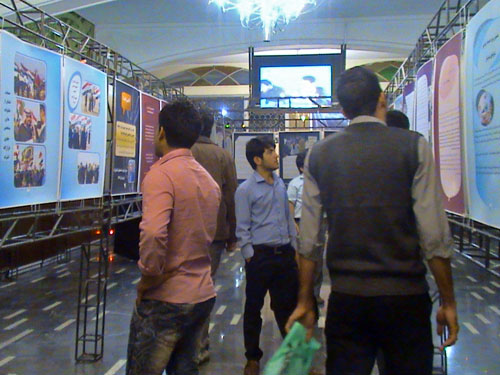
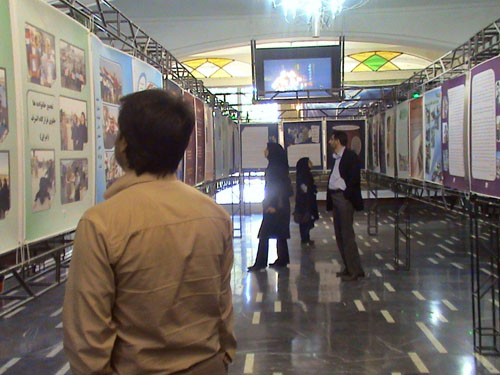
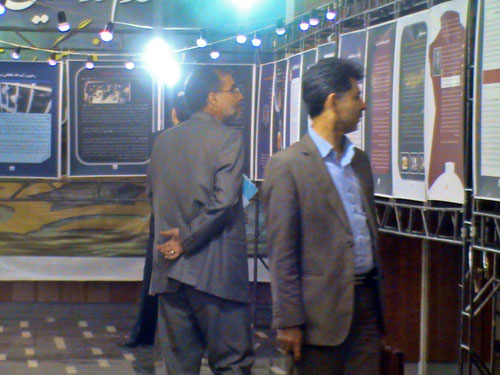



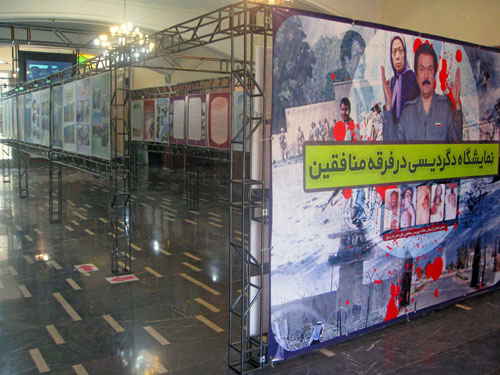
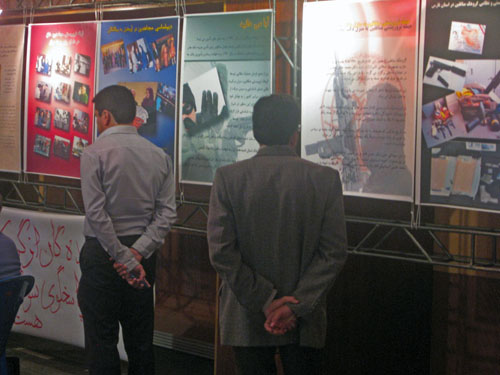
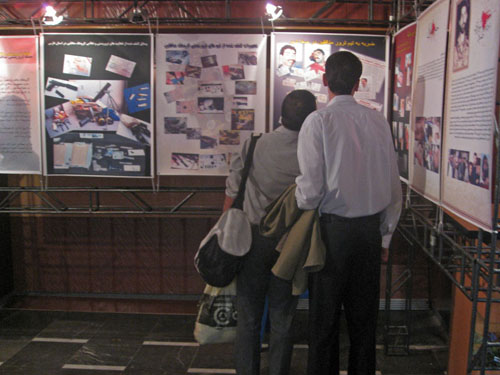
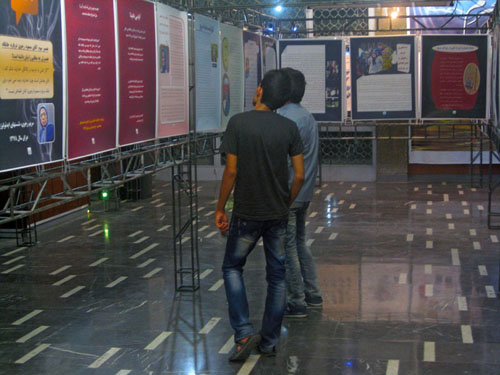
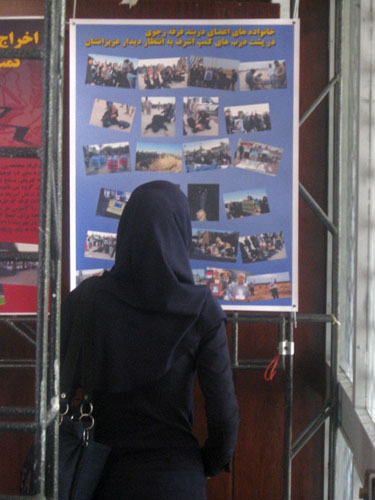
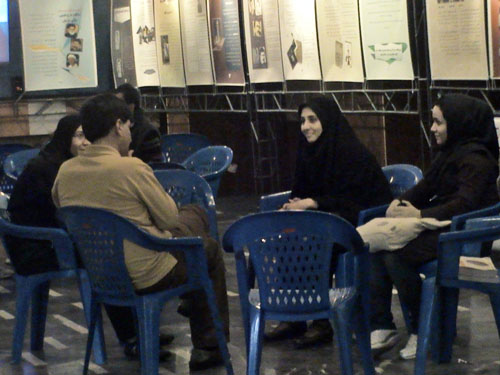
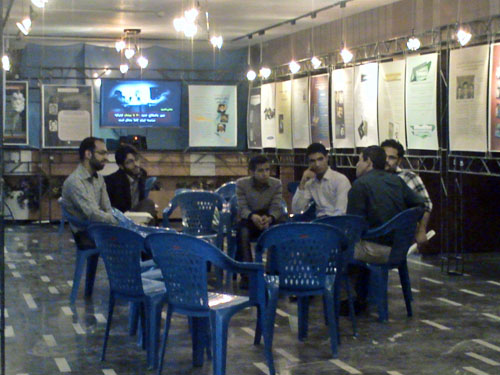
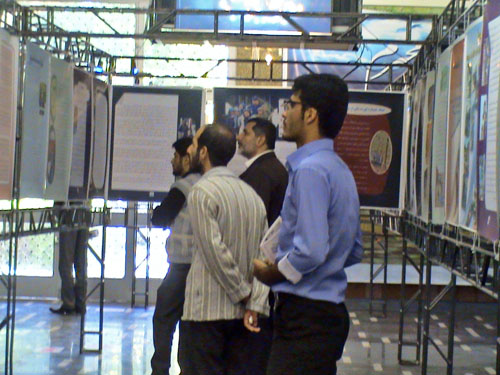
Mujahedin Khalq Organization
Hereinafter, what the MeK puts on agenda is stimulating West to increase economic pressure and set off an all-out political war against Iran. This is the reason behind the group’s campaign in the US in favor of Mitt Romney or their effort to trace the companies who deal with Iran or some European countries’ trading with this country in order to put them under pressure to cut off these exchanges.
The MeK removal from the US list of Foreign Terrorist Organizations has determinant role in future direction of the group.
The US motivations for delisting of the MeK and providing conditions for this terrorist group to conduct free political – commercial activities is a topic that should be investigated separately, but, to put briefly, one can say that the US has placed them at the beginning of a path that if proceeds as it is designed, then America can employ them in feuding over Iran.
The MeK strategy shift
As the consequence of getting out of the terrorist list, The MeK needs to shift its strategy for confronting the Islamic Republic and pursue this goal with a different program and mechanism.
The fact is that the strategy of "fall through armed struggle", which the MeK past three decades has persuaded it through tactics of large operations, urban warfare and terror, alignment with Saddam in the war against Iran, and even triggering a military invasion by the US and the Zionist Regime to Iran, is totally defeated and will never find a chance to reoccur. Public emergence of Masood Rajavi (something that sooner or later will happen) and likely congratulations on his gang’s delisting, really is official announcement of this failure.
Then what happens?
Hereinafter, what the MeK puts on agenda is stimulating West to increase economic pressure and set off an all-out political war against Iran. This is the reason behind the group’s campaign in the US in favor of Mitt Romney or their effort to trace the companies who deal with Iran or some European countries’ trading with this country in order to put them under pressure to cut off these exchanges.
Effort to put "immediate Regime Change" on the US agenda and shifting policy from investment on domestic opponents toward the opposition abroad is among the changes in the MeK strategy. overall viewing, one can account that this shift will approximate the MeK to western countries. But the gap is much larger than it looks.
In this regard, we should notice that the US and European countries are focused on Iran’s internal developments and managing it to their benefits and so- called gradual decay from within; this means complete elimination of the opposition abroad.
About the opposition abroad, Rajavi probably offer suggestions concerning alliance and coalition with Iranian opposition groups that merely could lead to theoretical arguments and reactions, because, given the MeK’s ideology and record, It is unlikely that they be willing to attend in Joint meetings and negotiate with the others.
It is very important issue that the MeK are suffered from inversion of thinking and view. The most effects of this inversion are represented in their analysis of situation inside Iran and of Iranian people, the capabilities of Iranian government, their own organizational capabilities, and their misunderstanding of Western policy. Of course, the MeK’s leadership neither is able to understand this fact, nor he would accept it. So, he draws his gang on a Path of no return.
People’s Mujahedin of Iran (MEK)
last updated: September 27, 2012
Please note: IPS Right Web neither represents nor endorses any of the individuals or groups profiled on this site.
The People’s Mujahedin of Iran (Mojahedin-e Khalq-e Iran, or MEK) is an Islamic- and Marxist-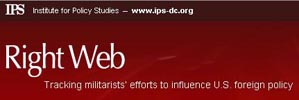 inspired militant organization that advocates the overthrow of the Islamic Republic of Iran. The group was founded in 1963 as an armed guerrilla group after the Shah Mohammad Reza Pahlavi violently suppressed opposition to his regime.
inspired militant organization that advocates the overthrow of the Islamic Republic of Iran. The group was founded in 1963 as an armed guerrilla group after the Shah Mohammad Reza Pahlavi violently suppressed opposition to his regime.
Over the years, the group developed a track record of violent opposition to the Iranian regime—both against the monarchy and the Islamic government that succeeded it—and countries deemed supportive of it, including the United States. For years, the group was considered a proscribed terrorist organization by the United States. But on the heels of an aggressive and well-funded lobbying campaign supported by a bipartisan cast of high-profile former public officials, Secretary of State Hillary Clinton announced in September 2012 that she was removing the group from the State Department’s list of foreign terrorist organizations, where the MEK had been listed since 1997.[1]
The group’s origins are eccentric and its history tumultuous. According to the U.S. State Department: “The group participated in the 1979 Islamic Revolution that replaced the Shah with a Shiite Islamist regime led by Ayatollah Khomeini. However, the MEK’s ideology—a blend of Marxism, feminism, and Islamism—was at odds with the post-revolutionary government, and its original leadership was soon executed by the New regime. In 1981, the group was driven from its bases on the Iran-Iraq border and resettled in Paris, where it began supporting Iraq in its eight-year war against [Ayatollah] Khomeini’s Iran. In 1986, after France recognized the Iranian regime, the MEK moved its headquarters to Iraq, which facilitated its terrorist activities in Iran. Since 2003, roughly 3,400 MEK members have been encamped at Camp Ashraf in Iraq.”[2]
As of late 2012, most of the residents of Camp Ashraf had been relocated to another facility in Iraq to await resettlement in third countries. The MEK’s cooperation in the relocation—which had previously sparked concerns of a planned mass suicide by group members resistant to the move [3]—was reportedly a key factor in Clinton’s decision to delist the group.[4]
Because of the MEK’s cult-like organization under leader Maryam Rajavi, its support for Iraq in the Iran-Iraq war, and its participation in Saddam Hussein’s crackdowns on Iraqi Shiites and Kurds, the group has been described by the New York Times as “a repressive cult despised by most Iranians and Iraqis.”[5]
U.S. officials have recognized this reputation. “While they present themselves as a legitimate democratic group worthy of support, there is universal belief in the administration that they are a cult," one official told CNN after the decision was made to delist the group. "A de-listing is a sign of support or amnesia on our part as to what they have done and it does not mean we have suddenly changed our mind about their current behavior. We don’t forget who they were and we don’t think they are now who they claim to be, which is alternative to the current regime."[6]
Despite its murky reputation, MEK has presented itself to western backers as a popular and democratic Iranian opposition group that could lead the Islamic Republic to democracy—often even referring to Rajavi, who lives in exile in Paris and has never run for office in Iran, as the country’s “president-elect.”[7] [..]
Other analysts warned that the decision could cause U.S.-Iranian relations to deteriorate even further. “The decision will no doubt make the Iranian leadership even more distrustful of U.S. intentions regarding the future of Iran, particularly given the congressional support for the MEK to spearhead regime change,” wrote Iran expert Farideh Farhi. “Less trust will make compromise less likely, presumably a preferred outcome for the high profile supporters of the MEK in Congress and elsewhere.”[9]
Divisive Impact on U.S. Politics
The MEK has had a divisive impact in the United States. While it has garnered supporters from across the U.S. political landscape, it has also spurred negative reactions from representatives of nearly all political factions. Neoconservatives are a case in point. For example, after news agencies reported in early 2012 that the MEK—with support from Israel—had allegedly been involved in the assassination of Iranian scientists, a number of neoconservative mouthpieces hailed the group. The Ruport Murdoch-owned New York Post ran an editorial stating: “Were the MEK to play the critical role in derailing an Iranian bomb, it would be far more deserving of a Nobel Peace Prize than a certain president of the United States we could mention.”[10]
Similarly minded ideologues like Raymond Tanter, a member of the Committee on the President Danger, have called the MEK “the best source for intelligence on Iran’s potential violations of the nonproliferation regime,” arguing that delisting the group “would allow regime change to be on the table in Tehran.”[11] At a rally for the group in Paris, former New York Mayor Rudy Giuliani proclaimed, "Appeasement of dictators leads to war, destruction and the loss of human lives. For your organization to be described as a terrorist organization is just really a disgrace."[12]
On the other hand, many neoconservatives view the group with antipathy, largely because they think that an alliance with it is short-sighted with respect to the goal of achieving regime change in Iran. An example is Michael Rubin, who has been sharply critical of MEK supporters. Responding to the news about the MEK’s alleged role in assassinating Iranian scientists, Rubin wrote: “By utilizing the MEK—a group which Iranians view in the same way Americans see John Walker Lindh, the American convicted of aiding the Taliban—the Israelis risk winning some short-term gain at the tremendous expense of rallying Iranians around the regime’s flag. A far better strategy would be to facilitate regime change. Not only would the MEK be incapable of that mission, but involving them even cursorily would set the goal back years.”[13]
Mojahedin Khalq (MKO, MEK, Rajavi cult) continued terror campaign
Lobbying Campaign
Organizations sympathetic to MEK garnered an impressive array of establishment supporters inside Washington to speak in favor of delisting the group. The effort, according to the New York Times, “won the support of two former C.I.A. directors, R. James Woolsey and Porter J. Goss; a former F.B.I. director, Louis J. Freeh; a former attorney general, Michael B. Mukasey; President George W. Bush’s first homeland security chief, Tom Ridge; President Obama’s first national security adviser, Gen. James L. Jones; big-name Republicans like the former New York mayor Rudolph W. Giuliani and Democrats like the former Vermont governor Howard Dean; and even the former top counterterrorism official of the State Department, Dell L. Dailey.”[14] Mitchell Reiss, a top foreign policy advisor to Mitt Romney/Paul Ryan presidential campaign, also spoke on behalf of the group.[15]
One potential explanation for this diverse list of supporters are the large speaking fees the MEK network has offered to big-name public figures. “Your speech agent calls, and says you get $20,000 to speak for 20 minutes,” said a State Department official quoted by the Christian Science Monitor. “They will send a private jet, you get $25,000 more when you are done, and they will send a team to brief you on what to say.”[16] Pro-MEK individuals and organizations also reportedly donated thousands of dollars to the campaigns of several sitting members of Congress, including Reps. Ileana Ros-Lehtinen, Bob Filner, Ted Poe, Mike Rogers, and Dana Rohrabacher.[17]
Underlying MEK’s more mainstream backing has been a bedrock of support from foreign policy hawks. In addition to Woolsey and other former Bush administration officials, the group has enjoyed the avid backing of Iran hawks like former ambassador John Bolton and groups like the Iran Policy Committee (IPC), a right-wing U.S.-based outfit whose putative goal is “empowering Iranians for regime change.”
In a 2005 Iran policy paper, IPC placed the delisting of MEK at the forefront of its proposals for U.S. policy toward Iran. The "continued designation since 1997 of the main Iranian opposition group, Mujahedeen e-Khalq (MEK), as a foreign terrorist organization by the State Department assures Tehran that regime change is off the table,” wrote the report’s authors. “Removing the MEK’s terrorist designation would be a tangible signal to Tehran and to the Iranian people that a new option is implicitly on the table—regime change.”[18]
MEK’s critics have likened the organization’s advocacy campaign to that of the Iraqi National Congress (INC), an Iraqi exile group led by Ahmed Chalabi that worked to drum up U.S. support for an invasion of Iraq in the 1990s and early 2000s. By presenting itself to Western supporters as an Iraqi government-in-waiting, INC enabled Iraq hawks in the United States to claim that there was Iraqi support for the U.S. action. For Iran hawks, write Ali Fatemi and Karim Pakravan of the National Iranian American Council, “Maryam Rajavi, the MEK leader and self-proclaimed president of Iran, is their new Chalabi.”[19]
IPC in particular has embodied the link between pro-MEK groups and pro-INC groups. A 2010 investigation by the U.S. foreign policy blog LobeLog found that “through 2006, IPC shared an address, accountants, and some staff with multiple organizations that either fronted for or had direct ties to the INC, even sharing staff members with those groups. Some of those ties have continued through today.”[20]
History
Founded in 1963, MEK was one of the many Iranian factions that supported the overthrow of the shah in 1979.[21] However, according to a report by the Christian Science Monitor, it was the only one that used violence against Americans in the run-up to the revolution, launching a string of assassinations and attacks against American military and diplomatic officers in Iran in the 1970s.
The group was expelled from Iran in 1981 when it fell out of favor with Ayatollah Khomeini in a post-revolutionary power struggle.[22] Since then, it has launched thousands of attacks against Iranians it has deemed “agents of the regime,” peaking at a rate of three assassinations per day in the 1980s, and staged high-profile raids on Iranian diplomatic offices all over the world—including an orchestrated set of attacks on 12 diplomatic facilities in 10 countries on a single day in 1992.[23]
In the mid-1980s, MEK settled in Iraq as a guest of Saddam Hussein, who offered the group use of Camp Ashraf, an encampment and army base north of Baghdad. There, not only did MEK fight on the Iraqi side of the Iran-Iraq war, but it also helped Saddam crush the CIA-instigated Iraqi Kurdish and Shiite uprisings that came on the tail of the 1991 Gulf War, leading to the precipitous erosion of its support in Iran and Iraq alike.[24]
MEK’s fighters at Ashraf were disarmed by the United States following the fall of Saddam’s government in 2003. In the following years, the camp was subject to occasionally violent raids by the new Iraqi government, which sparked concerns about further violence or a humanitarian crisis when it ordered the camp closed by the end of 2011. Although the Ashraf issue is separate from the issue of MEK’s status as a terrorist organization, MEK’s backers in the West used the conditions at the camp to garner sympathy for the group’s broader agenda in Washington and to argue that its continued listing as a terrorist group is the cause of its mistreatment.[25]
MEK’s lobbying efforts were foreshadowed in a 1994 report by the U.S. State Department, which concluded that the group was unlikely to be serious about its democratic overtures. According to the Christian Science Monitor: “Noting the MEK’s ‘dedication to armed struggle’; the ‘fact that they deny or distort sections of their history, such as the use of violence’; the ‘dictatorial methods’ of their leadership; and the ‘cult-like behavior of its members,’ the State Dept. concluded that the MEK’s ‘29-year record of behavior does not substantiate its capability or intention to be democratic.’ “That report describes tactics that foreshadow the MEK’s lobbying campaign today, 16 years later. It notes a ‘formidable Mojahidin outreach program,’ which ‘solicits the support of prominent public figures,’ and the ‘common practice … to collect statements issued by prominent individuals.’”[26]
The group formally renounced the use of violence in 2001, but an FBI investigation found MEK members to be “actively involved in planning and executing acts of terrorism” as recently as 2004. In February 2012, NBC News reported that the Israeli government had coordinated with MEK to launch a series of assassinations against Iranian nuclear scientists.[27] The group’s delisting may open the door to future cooperation with the United States as well.
People’s Mujahedin of Iran (MEK)
Founded
1963
Right Web is not responsible for the content of external internet sites.
Sources
[1] Elise Labott, “Clinton to remove Iranian exile group from terror list,” CNN.com, September 21, 2012,
http://security.blogs.cnn.com/2012/09/21/clinton-
to-de-list-iranian-exile-group-from-terror-list/.
[2] U.S. State Department, “Country Reports on Terrorsm 2010: Chapter Six: Foreign Terrorist Organizations,” August 2011,
http://www.state.gov/j/ct/rls/crt/2010/index.htm.
[3] Barbara Slavin, “Mass Tragedy Feared as Closure of MEK Camp Looms,” Right Web, December 19, 2011,
http://rightweb.irc-online.org/articles/display/mass_
tragedy_feared_as_closure_of_mek_camp_looms.
[4] Elise Labott, “Clinton to remove Iranian exile group from terror list,” CNN.com, September 21, 2012,
http://security.blogs.cnn.com/2012/09/21/clinton
-to-de-list-iranian-exile-group-from-terror-list/.
[5] Scott Shane, “For Obscure Iranian Exile Group, Broad Support in U.S.,” New York Times, November 26, 2011,
http://www.nytimes.com/2011/11/27/us/politics/lobbying-support
-for-iranian-exile-group-crosses-party-lines.html?pagewanted=all.
[6] Elise Labott, “Clinton to remove Iranian exile group from terror list,” CNN.com, September 21, 2012,
http://security.blogs.cnn.com/2012/09/21/clinton-
to-de-list-iranian-exile-group-from-terror-list/.
[7] See Matt Duss, “The MEK Are Not Iran’s ‘Democratic Opposition,” Middle East Progress, July 19, 2011,
http://middleeastprogress.org/2011/07/the-mek-a
re-not-irans-democratic-opposition/.
[8] Ali Gharib, “Enemy Of My Enemy: Delisting The MEK,” Daily Beast, September 25, 2012,
http://www.thedailybeast.com/articles/2012/0
9/25/enemy-of-my-enemy-delisting-the-mek.html.
[9] Quoted in Jasmin Ramsey, “Analysts Respond To Expected US Decision To Delist MEK From FTO List,” LobeLog, September 22, 2012,
http://www.lobelog.com/analysts-respond-to-e
xpected-us-decision-to-delist-mek-from-fto-list/.
[10] New York Post, “Loose Lips,” February 10, 2012,
http://www.nypost.com/p/news/opinion/e
ditorials/loose_lips_7xvSwHsWqSoIjyXIWl8nmI.
[11] See Right Web, Raymond Tanter profile,
http://www.rightweb.irc-online.org/profile
/Tanter_Raymond.
[12] Edward Cody, “GOP leaders criticize Obama’s Iran policy in rally for opposition group,” Washington Post, December 23, 2010,
http://www.washingtonpost.com/wp-dyn/
content/article/2010/12/22/AR2010122205180.html.
[13] Michael Rubin, “Re: Israel’s Iranian Allies of Convenience,” Commentary Magazine, Contentions blog, February 13, 2012,
http://www.commentarymagazine.com/2012
/02/13/israel-iran-allies/.
[14] Scott Shane, “For Obscure Iranian Exile Group, Broad Support in U.S.,” New York Times, November 26, 2011,
http://www.nytimes.com/2011/11/27/us/politics/lobbyin
g-support-for-iranian-exile-group-crosses-party-line
s.html?pagewanted=all.
[15] Eli Clifton, “Romney Adviser Advocating For Controversial Iranian Terrorist Group,” ThinkProgress, August 23, 2011,
http://thinkprogress.org/security/2011/08
/23/302480/romney-adviser-mek/.
[16] Scott Peterson, “Iranian group’s big-money push to get off US terrorist list,” Christian Science Monitor, August 8, 2011, p. 3,
http://www.csmonitor.com/World/Middle-East/20
11/0808/Iranian-group-s-big-money-push-to-get-
off-US-terrorist-list/%28page%29/3
[17] Chris McGreal, “MEK decision: multimillion-dollar campaign led to removal from terror list,” Guardian, September 21, 2012,
http://www.guardian.co.uk/world/2012/sep/
21/iran-mek-group-removed-us-terrorism-list.
[18] Iran Policy Committee, “U.S. Policy Options for Iran,” February 10, 2005,
http://www.iranpolicy.org/uploadedFiles/U
SPolicyOptions_for_Iran_Feb2005.pdf.
[19] Fatemi and Karim Pakravan, “War With Iran? US Neocons Aim to Repeat Chalabi-Style Swindle Ali,” Truthout, July 15, 2011.
[20] Ali Gharib and Eli Clifton, “Neocon Iran Policy Committee tied to disgraced Iraqi National Congress,” LobeLog, September 10, 2010,
http://www.lobelog.com/neocon-iran-policy-committe
e-tied-to-disgraced-iraqi-national-congress/.
[21] U.S. State Department, “Country Reports on Terrorsm 2010: Chapter Six: Foreign Terrorist Organizations,” August 2011,
http://www.state.gov/j/ct/rls/crt/2010/index.htm.
[22] U.S. State Department, “Country Reports on Terrorsm 2010: Chapter Six: Foreign Terrorist Organizations,” August 2011,
http://www.state.gov/j/ct/rls/crt/2010/index.htm.
[23] Scott Peterson, “Iranian group’s big-money push to get off US terrorist list,” Christian Science Monitor, August 8, 2011, p. 7,
http://www.csmonitor.com/World/Middle-East/2011/08
08/Iranian-group-s-big-money-push-to-get-off-US
-terrorist-list/%28page%29/7.
[24] Scott Peterson, “Iranian group’s big-money push to get off US terrorist list,” Christian Science Monitor, August 8, 2011, p. 8,
http://www.csmonitor.com/World/Middle-East/2011
/0808/Iranian-group-s-big-money-push-to-get-off
-US-terrorist-list/%28page%29/8
[25] See, for example, Eli Clifton, “Defending MEK, Mukasey, Ridge & Freeh Attack Obama For Hastily Exiting Iraq, While Admitting He’s Trying To Stay,” ThinkProgress, August 15, 2011, http://thinkprogress.org/security/2011/08/15
/296188/mukasey-ridge-freeh-obama-iraq-mek/.
[26] Scott Peterson, “Iranian group’s big-money push to get off US terrorist list,” Christian Science Monitor, August 8, 2011, p. 8,
http://www.csmonitor.com/World/Middle-East/2011
/0808/Iranian-group-s-big-money-push-to-get-off-
US-terrorist-list/%28page%29/8
[27] Richard Engel and Robert Windrem, “Israel teams with terror group to kill Iran’s nuclear scientists, U.S. officials tell NBC News,” NBCNews.com, February 9, 2012, http://rockcenter.nbcnews.com/_news/2012/02/08/10354
553-israel-teams-with-terror-group-to-kill-irans-nuclear
-scientists-us-officials-tell-nbc-news.
——–
Right Web
An Iranian opposition organisation said on Saturday it is ready to move another group of its 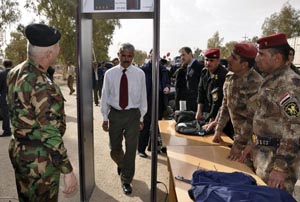 Iraq-based members to a new site near Baghdad after a delay which has dragged on for several months.
Iraq-based members to a new site near Baghdad after a delay which has dragged on for several months.
"As a gesture of goodwill, the residents of Ashraf will commence the 6th convoy of 400 residents from Camp Ashraf to Camp Liberty on August 23," Maryam Rajavi, president of the National Council of Resistance of Iran which includes the People’s Mujahedeen Organisation of Iran, said in a statement.
In return, Rajavi said she expects Washington to renew "its commitments to the approach to delisting" the PMOI as a terrorist group, resolving "humanitarian issues" at the new site and ensuring "the safety and security" of its residents.
The PMOI and its affiliates have issued a torrent of statements complaining about living conditions at Camp Liberty, a former US military base near Baghdad to which its Iraq-based members estimated to number 3,200 began relocating from their long-time base of Camp Ashraf in late February.
For several months, the 1,200 PMOI members remaining in Ashraf have refused to move to Liberty as a result of those complaints. Were the 400 to move on Thursday, it is not immediately clear when the remaining 800 would be transferred.
They are moving from Ashraf to Liberty as part of a deal between the United Nations and the Iraqi government that aims to see the exiles relocated outside the country.
The US has said that moving from Ashraf could facilitate the group’s removal from the terror blacklist.
UN envoy Martin Kobler, who has been working to resolve the issue but has been the target of a barrage of PMOI attacks for the alleged poor conditions at Camp Liberty, welcomed the announcement that the 400 exiles were ready to move.
His office said in a statement that "the United Nations calls upon the remaining residents of Camp Ashraf to also start preparations for additional convoys to Camp Hurriya (Liberty), in order to peacefully complete the relocation process."
The leftwing PMOI was founded in the 1960s to oppose the shah of Iran, but took up arms against the country’s new clerical rulers after the 1979 Islamic revolution.
Now-executed Iraqi dictator Saddam Hussein allowed the PMOI to establish Camp Ashraf near the Iranian border after he launched the 1980-1988 war against Iran in which the group reportedly fought alongside his forces.
He also provided financial backing to the group, which has since said it has renounced violence.
Mujahadeen-e-Khalq (MEK) (aka People’s Mujahedin of Iran or PMOI)
Introduction
The People’s Mujahedeen of Iran, more commonly known as the Mujahedeen-e-Khalq or MEK, is
— — The MEK helped Islamists overthrow the Western-backed Shah in 1979, but broke violently with the clerics shortly after the revolution and were forced into exile in France in 1981. The group moved its base of operations to eastern Iraq in 1986, but a new Iraqi regime has called for the group to be resettled elsewhere in 2012. International efforts have been under way to relocate the group to a temporary base outside Baghdad and then eventually to other countries. The State Department considers MEK’s successful relocation as a "key factor" in its forthcoming decision about delisting. The group publicly renounced terrorism in 2001 and has waged a sophisticated lobbying campaign in Washington to have its official status changed.
Roots of Resistance
MEK was founded in 1963 by leftist Iranian students opposed to the monarchy of Shah Mohammad Reza Pahlavi and its supporters in the West, including the United States. Many of MEK’s leaders–including current chief Massoud Rajavi–were imprisoned by the Shah in the 1970s, and several were executed. MEK participated in the 1979 revolution that swept Ayatollah Khomeini into power and supported the takeover of the U.S. Embassy that year. However, MEK’s ideology–a blend of Marxism, feminism, and Islamism–put it at odds with the Ayatollah Khomeini government. The group soon began plotting against the Islamic new government, killing dozens of senior government officials, including the president and prime minister. The clerics retaliated with the arrest and execution of Mujahedeen. Eventually the group was driven into exile in Paris, where Rajavi set up the National Council of Resistance in Iran (NCRI), also known as MEK’s "parliament in exile."
In 1987, the Chirac government expelled Rajavi and much of the MEK as part of a French-Iranian deal (NYT) that freed French hostages held by pro-Iranian groups in Lebanon. The MEK was welcomed into Iraq, where it helped Saddam Hussein wage the eight-year Iran-Iraq War and battle Kurdish uprisings in the north. According to the U.S. State Department, Baghdad armed MEK near the end of the Iran conflict (1980-88) "with heavy military equipment and deployed thousands of MEK fighters in suicidal, mass wave attacks against Iranian forces." Iran’s Revolutionary Guard killed some two thousand MEK in this failed assault, known as "Operation Eternal Light."
MEK’s campaign against the Islamic Republic, including the assassination of high-ranking officials, continued throughout the 1990s and early 2000s. Following the 2003 invasion of Iraq, U.S. forces disarmed the group of heavy weaponry and sequestered it in Camp Ashraf, a 14-square-mile former Iraqi military base in the country’s northeast.
Leadership & Ideology
MEK is led jointly by husband-and-wife team Massoud and Maryam Rajavi, and represents the largest militant Iranian opposition group committed to the overthrow of the Islamic Republic. It is also "the only army in the world with a commander corps composed mostly of women," says former CFR press fellow Elizabeth Rubin. Maryam Rajavi joined the resistance as a student in Tehran in the early 1970s and, at the behest of her husband, assumed joint control of the group in 1985. Feminism and allegiance to the Rajavi family are pillars of MEK ideology, which was founded on both Islam and Marxism–though the group has denied its affiliation with the latter, Rubin says. Some analysts have characterized MEK as a cult (BBC), citing the group’s ardent fealty to the Rajavis and the observance of bizarre practices such as "eternal divorce" and celibacy. Older women were required to divorce their husbands in the late 1980s, and younger girls cannot marry or have children.
Maryam Rajavi was chosen as president-elect of the NCRI in 1993 and, according to the group’s website, expects to oversee a six-month democratic transition in Iran "once the mullahs are toppled." Based out of Paris, she also serves as the group’s chief ambassador to the international community. NCRI’s political platform includes support for human rights, women, capitalism, religious freedom, minority rights, and Iran’s integration into the global community. Massoud Rajavi disappeared following the invasion of Iraq in 2003; his whereabouts and current status are unknown. "Cult leaders generally don’t retire," says Karim Sadjadpour, an Iran expert at the Carnegie Endowment for International Peace. "They either die or go to prison. I’d be surprised if Massoud Rajavi is still alive," he says.
Size & Support Structure
The U.S. State Department puts MEK global membership between 5,000 and 10,000, with significant contingents in Paris and other European capitals where the group maintains offices, according to an August 2011 report. Approximately 3,400 MEK members reside in Iraq. As of July 2012, two-thirds of them have relocated from Camp Ashraf to Camp Liberty (AFP), a former U.S. military base outside Baghdad.
An MEK front group kept a branch in Washington, DC, until the U.S. Justice Department closed it in 2003. Nonetheless, the group continues to operate a sophisticated network of advocates in the United States (USNews), enlisting the support of dozens of high-profile advocates, including former U.S. officials such as former New York City mayor Rudolph Giuliani and former governors Edward Rendell and Howard Dean. The advocacy is centered on the campaign to delist MEK as a U.S.-designated terrorist organization.
Until 2003, the MEK received funds, arms, and state sponsorship from Saddam Hussein. Since the Iraq invasion, MEK has relied on donations from Iranian expatriates and front organizations that often campaign for greater human rights in Iran, according to the State Department.
Exodus from Ashraf
As part of the 2003 invasion, U.S. forces initially attacked MEK military targets in Iraq despite the group’s claims of neutrality. The sides eventually negotiated a cease-fire that disarmed MEK members and confined them to Camp Ashraf. In 2004, Washington granted the group "protected persons" status under the Geneva Convention. That designation expired after Iraq regained full sovereignty in January 2009.
MEK had long feared that a transition to Iraqi control of Ashraf (PDF) would result in their eviction, according to the Congressional Research Service. As U.S. forces pulled out of Ashraf in April 2011, violence broke out between the Iraqi military and camp residents. Thirty-five MEK were killed, according to the UN. After the incident, Iraq reiterated its vow to close Ashraf following full U.S. withdrawal at the end of 2011. Iraq and the UN reached an agreement with MEK in December 2011 that would relocate Ashraf residents to Camp Liberty outside Baghdad, a "temporary transit station" from which group members could eventually be taken in by other countries. As of July 2012, the State Department reports that this transfer has stalled since the last relocation convoy left Ashraf in March.
The UN High Commission on Refugees is determining MEK members’ eligibility for refugee status, which would eventually set the stage for their resettlement outside Iraq. UN special representative for Iraq Martin Kobler has called on foreign governments to open their doors, but negotiations are still under way.
FTO Status
MEK was added to the U.S. State Department’s list of Foreign Terrorist Organizations in October 1997. Washington holds the group responsible for the deaths of several U.S. servicemen and civilians in Iran during the mid-1970s, as well as its alleged participation in the seizure of the U.S. Embassy during the 1979 revolution. Other terrorist activities cited by the State Department include MEK’s decades-worth of terror attacks on the Iranian regime, and the groups’ cooperation with Saddam Hussein in his crackdown on Iraqi Shia and Kurds in the early 1990s.
MEK has been trying to be removed from the FTO list for several years, officially renouncing terrorism in 2001. The group argues that its FTO status prevents it from legitimately participating in the Iranian opposition movement and points to the European Union and the UK’s decisions in the last five years to delist MEK as a terrorist group. In February 2012, Secretary of State Hillary Clinton said MEK’s compliance with the relocation to Camp Liberty would be a "key factor" in the decision whether to remove the FTO designation.
The Debate over Delisting
The debate over MEK’s FTO status has attracted both critics and supporters. In the National Interest, national security expert Raymond Tanter argues that "nothing is likely to be more decisive in reducing the strategic threat from Tehran than having a vigorous democratic opposition in Iran." The MEK, which he says should be a valuable component of this opposition, was designated an FTO by the Clinton administration as part of an effort to open dialogue with moderates in Tehran. Tanter writes that MEK should be delisted based on a lack of evidence of its terrorist activities since 2001.
Trita Parsi, an MEK critic and leader of the National Iranian American Council, says efforts by MEK and its supporters to frame the group as a legitimate Iranian opposition group are suspect. Their PR campaign is analogous to the now-discredited claims made by Ahmed Chalabi and the Iraqi National Congress (NYT) in the push for a U.S. overthrow of Saddam, Parsi says.
Others say that delisting MEK will unnecessarily damage U.S. relations with Tehran and harm Iran’s domestic democratic resistance, a movement that allegedly opposes MEK. Muhammad Sahimi of PBS’s Tehran Bureau told al-Jazeera: "Anyone who opposes the [Iranian government] and cares about Iran and democratic principles cannot do anything other than vehemently oppose the MEK." There is "no comparison with the non-violent Greens and the MEK," he said. Carnegie’s Sadjadpour concurs, noting MEK "is widely viewed as a backward and intolerant cult by their opposition peers in Iran."
Notably, the delisting debate seems to be hindering the relocation of MEK to Camp Liberty. Some U.S. backers of MEK have severely criticized the conditions at the new site. Former New York governor Rudolph Giuliani characterized the location as a "concentration camp" at an MEK-sponsored conference. The State Department condemns such attacks. Speaking to Foreign Policy, a U.S. official said "as delicate negotiations between the UN, the United States, the Iraqis, and the MEK continue, the role of these often paid advocates [on behalf of MEK] is becoming even more unhelpful and potentially dangerous."
Author: Jonathan Masters, cfr.org
The company providing communication networks to the Iraqi government, parliament and a number of key institutions in Iraq is actually a front company for the terrorist Mujahedin-e Khalq 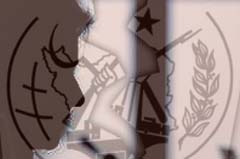 Organization (MKO, a.k.a. MEK and PMOI), says one source.
Organization (MKO, a.k.a. MEK and PMOI), says one source.
According to the Habilian Foundation website report, the source told the Arabic language al-Mustaqbal daily newspaper that the company also provided internet services to the government, parliament, and several key institutions in Iraq.
“Foreign companies are often entrusted with the provision of Internet services, but this company belongs to the MEK which has been incorporated in three countries, including Australia.
The source underlined that the company conspired with several authorities to infiltrate into the institutions and organizations over 5 years (2006 to 2011).
During the Iraq’s 2010 parliamentary elections, some informed sources announced that the Internet Service Provider to the country’s Independent High Electoral Commission was affiliated to terrorist MEK group.
The Mujahideen-e Khalq will never have the necessary popular grassroots to carry the banner of a future revolution against the Islamic Republic of Iran.
With the failure of yet another round of nuclear talks and the Islamic Republic of Iran remaining 
Espousing a controversial blend of Islamic-Marxism and claimed secular outlook, the MEK originated from anti-Shah university students. It later adapted into the cultish militant group of the 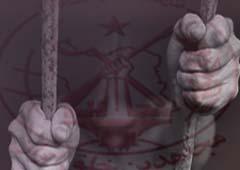 1990s and eventually into the self-described liberal-Islamic alternative to the regime that exists in Tehran today.
1990s and eventually into the self-described liberal-Islamic alternative to the regime that exists in Tehran today.
Continuing an apparent metamorphosis, the MEK and its associates claim to have shirked their original anti-Western roots and now seek recognition by the international system in their struggle to overthrow the Islamic Republic of Iran and to establish an apparent democratic society with secular ideals. From their current base of operations in Iraq and around the world, the MEK continue to fight a battle for legitimacy and identity through a well-funded lobbying campaign to gain the favor of the West and facilitate opposition to the Islamic Republic. Still, the MEK’s violent history and Iran’s long cultural memory do not bode well for its prospects of acceptance by Iranians as an alternative to the authoritarian state. Thus, while it will continue to expediently transform, it is unlikely that the MEK can effectively rebrand its image to suit the Iranian people. This can be attributed to its violent history, cultish overtones, and cooperation with Saddam Hussein during the Iran-Iraq war.
Enemy of the State
The MEK’s ideology has been developing since the group emerged in 1963. Initially, the organization sought to antagonize what it perceived as a US–Shah dependent relationship. Violent undercurrents were evident in their efforts as some members underwent combat training with fighters from the Palestine Liberation Organization (PLO). By 1972 two failed attacks on the regime brought reprisals as the SAVAK — the Shah’s secret police — imprisoned half their members. The militant trend continued as the MEK’s terrorist attacks and street fighting, with Westerners also in the crosshairs, contributed to the overthrow of the Shah. In the consolidation of power after the Shah fell, the MEK positioned itself as ideologically antithetical to the proponents of an Islamic republic, and thus suffered additional retaliations.
The group eventually dissolved and its remaining leadership fled from the hostility of the Islamic regime. In 1981, the leaders escaped to Paris and completed the transition of the MEK from a grassroots peoples’ movement to a cultish organization focusing on an armed attrition. From their base of operations, the MEK fought a “tit for tat” with Hezbollah, engaging Iranian targets across the world.
From Terrorists to Traitors
While the MEK has an extensive public history of violence in Iran, the pinnacle of its repugnance in the eyes of many Iranians came during its cooperation with Saddam Hussein’s Iraq. Chased out of Iran, the MEK settled under the wing of the Ba’athist regime in the 1980s. From Iraq, the National Liberation Army (NLA), the paramilitary wing of the group, carried out military excursions and over the horizon attacks on Iran. Directly fighting against their countrymen while guests of Saddam, the MEK reached a new low for Iranians as it became allies with one of Iran’s most hated enemies in one of her bloodiest wars.
After the Iran-Iraq War, the counterstrike between Iran and the MEK continued well into the 1990s. Military incursions into Iran were met with an MEK base falling victim to Iranian airpower. In response, 13 Iranian embassies were targeted by the MEK. Other attacks inside Iran, such as bombings and assassinations, continued throughout the decade.
In 2002, the MEK released corroborated intelligence that Iran was covertly enriching uranium, seeking to gain the favor of the West and to undermine Tehran. Today, the MEK remains on the US State Department’s terrorism list, and its personnel in Iraq at Camp Ashraf remain in a dangerous state of flux while their fate is debated in a newly hostile Iraq. Despite the publically uneasy relations with Western governments, the MEK reportedly maintains a partnership with international intelligence agencies in a covert sabotage and espionage effort against Iran’s nuclear program.
As the MEK continues to weather hostility from the Iraqi government, it also fights a different kind of battle for legitimacy from the West. The MEK’s old hostility towards the West has been supplanted by a professional and well-funded public relations campaign to convince Western policy elites of a reformation from a violent past and of the MEK’s new status as a viable democratic opposition group to the Islamic Republic.
Regardless of whether these claims of rebirth are true, the MEK faces huge obstacles in its struggle for legitimacy in the hearts and minds of the Iranian people. Its violent history of political resistance and its treasonous relationship with Saddam has left a stubborn sense of loathing for the organization within Iranian consciousness. The animosity and mistrust for the MEK will be persistent as history shows that the proud Persian culture does not take such interference and hostility lightly.
For Iranians, past “insults” persist within their cultural memory; the Arab invasion of the Sassanid Empire in the 7th century is still lamented to this day in Iranian culture as a grand affront against Persian heritage. In modern times, Iranian’s have felt their sovereignty was being infringed upon due to the great game in Iran being played by Russia, Britain and the US. Indeed, this has not been forgotten either.
Perhaps most salient is the American led coup d’état of Iran’s democratically elected Prime Minister Mohammed Mossadeq in 1953, which resulted in a still seething animosity and blowback, which helped trigger the 1979 Islamic Revolution.
Furthermore, Iranians are very nationalistic, and in dire straits, such as during the Iran-Iraq War, they have supported their country despite reservations towards the new Islamic Republic. It is thus unlikely that the proud Iranian public will forget the MEK’s violent, cultish and treasonous past.
Although clouded by the intense propaganda from both the Islamic Republic and the MEK, there appears to be very little love or sympathy for the MEK from Iranians. These sentiments are practical corroborators of the theoretical possibility that, despite its resistance to the hated Iranian regime, the MEK will continue to receive its share of animosity from Iranians.
If not mass popular appeal, the MEK does have impressive funding and apparent support from entities not well disposed to the Iranian regime. However, without a grassroots momentum, the MEK can never become the viable superstructure of an opposition movement that some in the West, who ignore the MEK’s failings for the potential prize of overthrowing the Islamic Republic, hope for.
In fact, it need not be.[..]
That is not to say that MEK has no role in Iran’s future. In the past, revolutionary scale resistance movements in Iran have been populist amalgamations of varied and diverse groups from both the right and the left. If the cauldron of popular dissent once more reaches a critical point in Iran, the MEK cannot hope to completely — ideologically and fundamentally — encompass what will surely be a larger and more diverse enterprise. Nonetheless, that reality does not preclude it from some role in fighting with their fellow Iranians, as they have in the past, for a free future.
Ari Katz, Fairobserver
A high-ranking member of the terrorist Mujahedin-e Khalq Organization (MKO) has died at a hospital in the Iraqi capital of Baghdad.
According to a Monday report by the Mehr news agency, Batoul Rajaei died of lung cancer several days ago after her health deteriorated. She had been transferred from Camp Liberty – a former US military base near Baghdad’s International Airport – to a medical center in Baghdad.
The report added that the MKO insisted on conducting her burial at Camp Liberty. Iraqi officials, however, opposed the request and buried Rajaei far off the camp.
According to the terrorist group, Rajaei joined the MKO in March 1984, and received terrorist training in Pakistan. She was elected to the so-called MKO leadership council in 1993.
Rajaei was reportedly responsible for brainwashing MKO members into carrying out acts of terror, and oversaw the torture of those who sought to quit the terrorist organization.
The MKO fled to Iraq in 1986, where it enjoyed the support of Iraq’s executed dictator Saddam Hussein, and set up its camp near the Iranian border.
The group is known to have cooperated with Saddam in suppressing the 1991 uprisings in southern Iraq and carrying out the massacre of Iraqi Kurds.
The MKO has carried out numerous acts of violence against Iranian civilians and government officials.
For the last several months, articles about the Mujahedin-e-Khalq (MEK), an Iranian dissident 
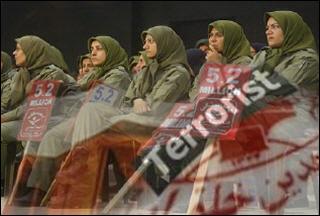 State Department’s list of terrorist organizations.
State Department’s list of terrorist organizations.
While focused mainly on these issues, the MEK media frenzy has also reflected several notable tendencies. First, the coverage has overwhelmingly depicted the group as a cultish, terrorist organization. Second, with its single-minded focus on the group’s “terrorist” pedigree, reporting on the MEK has made short shrift of the its long, complex, and controversial history. Little background has been provided on the group’s origins as a popular political organization and transformation into a resistance movement in exile, and even less insight has been given about its current status as a cult-like group.
In order to evaluate competing claims about the MEK’s terrorist credentials and its current position vis a vis the United States, Iran, and Israel, an understanding of this history is critical.
The Political Organization
The MEK was established in 1965 by three young university-educated professionals, Mohammed Hanifnejad, who would become the group’s first leader, Saied Mohsen, and Ali Asghar Badi’zadegan. From its inception, the organization dedicated itself to the overthrow of Iran’s then-ruler, Reza Shah Pahlavi. While committed to armed struggle, the MEK’s work remained largely non-violent and focused on spreading its anti-imperialist and anti-capitalist message to students and factory workers, among others.
The MEK espoused a political ideology described as “Eslame Vaghee” or “True Islam,” which combined Islamic concepts with principles of social justice. While religious practices, like daily prayer, fasting during the month of Ramadan, and zakat (alms giving to the poor), formed an important part of its political philosophy, the MEK was far from a militant Islamic organization. Eschewing regressive and reactionary forms of Islam, the MEK’s religious philosophy developed out of a commitment to the progressive, liberating power of Islam and reflected Iranian society’s strong Islamic identity.
Over time, the MEK gained substantial support, particularly among students, religious clerics, and “bazaaris,” Iran’s powerful merchant class. In response to this growing popularity, the MEK’s leadership and many of its supporters were arrested in 1971 by the SAVAK, Iran’s notorious secret police. While the organization’s founders along with most of its leadership were executed in April-May 1972, a handful of MEK leaders were spared execution and sentenced to life imprisonment. Among this small group was Massoud Rajavi, who would go on to become the MEK’s primary leader in the decades to come.
After the Iranian Revolution began and MEK leaders were released from prison, the group formally joined forces with various organizations, including the followers of Ayatollah Ruhollah Khomeini. Living as an exile in Paris during the lead up to the revolution, Khomeini had appreciated the value of working with the MEK, which enjoyed a strong support base inside the country.
This collaborative relationship substantially changed after the Ayatollah’s triumphant return to Iran in February 1979, following the ouster of Iran’s shah. Shortly after his arrival, the Ayatollah’s followers presented the MEK with an ultimatum – either unconditionally support Khomeini as Iran’s next ruler or face political isolation. Refusing to accept these terms, the group began publicly opposing Khomeini’s bid for power.
An outright war quickly developed between the two sides, with the new government arresting and killing countless MEK followers. The group responded with armed attacks against government installations and officials. By mid to late 1981, most MEK members who had not been arrested or killed fled the country, in what would become permanent exile for most.
Armed Resistance in Exile
Now focused on toppling the Islamic Republic, the MEK continued its work abroad. It established political headquarters in Paris and operated a series of “kanoons”, or community centers, around the world, including in several U.S. cities. A kanoon, which was typically an apartment or house owned or rented by a MEK supporter, served as a gathering place, center for grassroots organizing, and venue for community celebrations. In the early 1980s, most MEK members living outside of Iran were overwhelmingly young, recent émigrés. For these displaced individuals, the kanoons represented a safe haven, where they could live rent-free, speak Farsi, socialize, and meet other like-minded individuals.
Despite the civic and political work happening in these venues, armed resistance was at the heart of the MEK’s struggle against the Islamic Republic. In 1986, with the blessing of Saddam Hussein, the group established Camp Ashraf, a military base in Iraq near the Iran-Iraq border. Here, the MEK transformed its most committed supporters, both male and female, into a conventional fighting force. Periodically, this small but fervent group of soldiers would stage incursions into Iran [and only Iran], the most notable coming after the 1988 ceasefire ending the Iran-Iraq war.
While Saddam had provided the MEK with the vast majority of its arms, by the end of the 1991 Gulf War, this financial and logistical support had started to dwindle, an unintended victim of UN sanctions against Iraq. While the MEK continued to stage minor assaults into Iran, armed incursions became less and less feasible, and less and less frequent throughout the 1990s.
To add insult to injury, the MEK was also becoming increasingly irrelevant as an opposition group, having lost substantial support among the Iranian public. Many MEK supporters still inside Iran had been executed in 1988, in an infamous purge of the notorious Evin Prison. The decision to center MEK operations in Iraq was, however, the most damaging to the group’s reputation. Despite the clear practical and strategic reasons for this move, many Iranians saw the establishment of Camp Ashraf as an act of national betrayal, coming as it did during the height of the Iran-Iraq war.
The Cult
With prospects of toppling the Islamic Republic increasingly slim, the MEK focused on perpetuating its ideology and maintaining the devotion of its remaining members. Massoud Rajavi was presented as the organization’s god-like ideological father, while his wife, Maryam Rajavi, became the figurehead and public face of MEK leadership. Despite an avowed commitment to democratic ideals, the MEK intensified its already regimented system of internal governance, quashing dissent and rewarding only those blindly obedient to the group’s leadership.
Although these tendencies had existed before the post-Gulf War period, panic and desperation took these practices into overdrive. In the hopes of developing a devoted cadre of followers, the MEK divided families, separating husbands from wives and parents from children. Many of the organization’s most fervent members, who had willingly given up family and career, became wholly dependent upon the MEK. For these individuals, daily life was largely restricted to the confines of Camp Ashraf, the Paris headquarters, or the kanoons. These institutions functioned as echo chambers in which the organization’s philosophy was repeatedly emphasized. To feed this propaganda machine, the MEK, which already published its own books and newspaper, created a satellite television network, began producing its own music, and, eventually, had its own boy band to boot.
While this strategy helped forge a deeply committed, though small, group of MEK supporters, for many the intolerance and subjugation was unbearable. Unsurprisingly, throughout the 1990s, the group lost scores of supporters.
The United States, Israel, and Iran
With its armed activities curtailed, its support within Iran virtually non-existent, and its membership abroad dwindling, in the 1990s, the MEK increased efforts to build support among Western government officials. While the results were tepid at best, the Presidency of George W. Bush, September 11, 2011, and the 2003 Iraq invasion changed the rules of the game. Suddenly, prominent American politicians of the neo-conservative strain were ready to speak with the MEK. And the MEK was more willing than ever to join these conversations.
In 1997, the group had been placed on the State Department’s terrorism list, in response to pressure from Iranian President Mahmoud Khatami. In the hopes that Khatami, a reformer, would soften Iran’s stance towards the United States, the Clinton Administration acquiesced to the request. Although the State Department designation initially had little affect on the MEK, after September 11th, the group’s activities in the United States were significantly curtailed, coming to a near standstill.
Desperation makes strange bedfellows. Facing virtual annihilation, in 2002-2003, the MEK solidified its now notorious relationship with certain neo-conservative elements of the Bush Administration, as well as with the Israeli government. In the short-term, the MEK focused on removing its name from the State Department list and protecting its military base in Iraq, which was threatened by talks of an impending U.S. invasion of the country. In the long-term, the group saw its dreams of toppling the Iranian government align perfectly (for the first time) with the goals of a sitting U.S. President. Israeli support for the MEK was welcomed for similar reasons, although the assistance was deeper both ideologically and logistically. The MEK’s leadership threw itself head on into cultivating these relationships and the rest, as they say, is history.
Conclusion
As it stands today, the MEK is a broken and largely irrelevant group. Concerned only with generating support among a narrow segment of the U.S. political elite, it has engaged in a bitter rivalry with a number of Iranian-American leaders and groups, such as the National Iranian American Council. While this bad blood partly explains the recent negative publicity about the MEK, at base, the group remains very insular and secretive, with little interest in cultivating public opinion within Iran or the diaspora.
Given its past relationships and strategic-interests, rumors about the MEK’s role in assassinating Iranian nuclear scientists may be true, and, if so, raise serious concerns about removing the group from the State Department’s list. Putting these allegations aside, however, the MEK’s reach and impact, whether inside or outside Iran, has dwindled to a trickle. With its Iraqi military base virtually lost and its credibility with most Iranians permanently destroyed, the group has come far from its roots as a popular political organization. Regardless of the power and influence of its new friends, the MEK stands little chance of ever coming to power in Iran.
Muftah.org
After the relocation of about 2000 people of camp Ashraf to the new Temporary Transit Location (Camp Liberty /Hurriya) the relocation process has been seemingly ceased by the MKO. The  leaders of the group do not cooperate with Iraqi government , the UN and the US State Department any more.
leaders of the group do not cooperate with Iraqi government , the UN and the US State Department any more.
The group leaders –apparently mad with the attorney for the US State Department who said that the US army has never been able to inspect Camp Ashraf to make sure it was disarmed — issued a statement and “invited” the State Department to inspect the camp.[1]
Besides, the MKO took a strong stance against the UN Secretary General’s Special Representative in Iraq, Martin Kobler. As usual, the group accused him of serving Islamic Republic of Iran and the government of Nouri al-Maliki.[2]
In its turn the US State Department issued a statement on June18, urging “immediate cooperation of Mujahidin Khalq with the Iraqi Government and UN”. The statement reads that the DOS remains concerned about the situation at camp Ashraf. Victoria Nuland, the spokesperson of the DOS, about the MKO’s recent “invitation for inspection”, said:”Constructive offers must be met with constructive spirit, and not with refusals or preconditions to engage in Dialogue.”She calls the group’s new pretext to stay in Ashraf as “an unnecessary distraction”.[3]
Why such reluctance again by the side of the MKO?
While the State Department believes that the Camp residents and their leadership – both in Iraq and in Paris – should recognize this path as a safe and humane resolution to this situation, the MKO leaders seem to oppose the complete closure of Ashraf and eventually their expulsion from Iraq. And, while the US Secretary of State has said that the camp closure is “a key factor in determining whether the organization remains invested in its violent past” [3] the MKO shows no sign of cooperation in order to comply with Iraqi government’s legal right — that is to sweep foreign forces off its territory.
Since the last convoy of Ashraf residents on May 5th there has been no convoy, according to senior US administration officials who attended a Special Briefing on June18, 2012. “Since that time, the MEK has curtailed its contacts both with the Iraqi Government but even with the UN, refusing to meet with Ambassador Martin Kobler, the head of the UN mission in Iraq.”[4]
The official believes that two probable reasons may have led the MKO to slow down its cooperation with the UN and the Iraq Government. “…there are two issues that have occurred to us. One, the MEK may have over-interpreted Iraqi politics and the possibility of a no-confidence vote against Prime Minister Maliki. That vote appears to be receding,.” he said.” A second reason is it may be an MEK over-interpretation and misunderstanding of the recent D.C. Circuit Court of Appeals ruling with respect to delisting.”[5]
However, the other official clarifies that the court has not told Secretary Clinton to delist the group and its leaders are “quite plainly, wrong”. the official concludes,” So it is time for the MEK to recognize that Ashraf is not going to remain an MEK base in Iraq.”[6]
What does the MKO propaganda do to fulfill the dream?
A delegation of Iraqi senior officials traveled to Europe to mobilize support for Camp Ashraf evacuation and secure transfer of the residents to Camp Liberty [TTL]. The delegation attended the meeting of the Relationship with Iraq Committee at the European Parliament. [7]
Iraqi Foreign Minister Undersecretary, Labid Abbawi proposed a statement about the meeting.”The meeting focused on the efforts made by the Iraqi Government in order to secure the transfer of Camp Ashraf residents to Camp Liberty in a peaceful manner and in accordance with international standards and in respect to human rights and international humanitarian law,” the statement said.[8]
Meanwhile the MKO’s propaganda arm, National Council of Resistance broadcasts the same event in a completely opposite way, claiming that the delegation is charged “to justify inhumane and suppressive behavior towards residents of Ashraf and Liberty.”[9]
The US administration official denounces the group’s propaganda by saying “We support the government considering people for refugee or otherwise bringing them in. Now, the United States is prepared to do its part. We take this obligation seriously. [10]
The MKO propaganda is all the time complaining of the “terrible “conditions of life at TTL. American officials, on the other hand, say that they follow condition at camp liberty in detail: ” We follow conditions at Camp Liberty in detail. We receive daily reports from the United Nations. We have an exact notion of the daily water supply. We know that it is – that each resident now receives about 200 liters per person per day of water. We follow the issues – we follow issues of electricity generation, problems with air conditioners, problems with sewage, that sort of thing. Medical treatment is available. The residents who need it are escorted to Baghdad hospitals. They’re allowed back. They’re given treatment. We follow this in great detail. “[11]
About complexities of MKO leaders’ approach towards the relocation issue, a US senior Official said,” We do not understand why, for example, they consider it in their interest to refuse contact with Martin Kobler, the head of the UN mission in Iraq, who, more than any other person, has – is responsible for the relative success of these relocations so far.” Of-course the official seems to find the answer- which is originated in the cult-like substance of the MKO. “They seem to be concerned with their organizational integrity”, he says.[12]
In order to maintain their integrity, the MKO resort to any probable pretext. The current political situation of Iraq appears to be a very little hope for the group to stay in its Iraqi headquarters Camp Ashraf where the forces are totally isolated from the world, obedient to their leaders. In response to a question posed by National Journal correspondent about the MKO’s possible strategy for the time being, the official said,” there is some evidence, and we – I would say that as an informed speculation, we believe the MEK may indeed calculate that a change of government in Iraq could rebound to their advantage, and they may be able – and they might be able to stay.
They do have some support among the Sunni politicians, but we believe that they are gravely mistaken to think that any Iraq – conceivable Iraqi government would, in fact, allow them to remain as a paramilitary organization in Iraq. We think that their time in Iraq is over.” [13]
By Mazda Parsi
References:
[1]The MKO Website. Nejat bloggers are either former MKO members or have a family member who is currently held in Camp Ashraf. They have suffered deeply because of Massoud Rajavi’s crimes. While the Nejat Bloggers recognize that citing sources of information is essential ,we, as a society feel so strongly against the MKO that we have agreed to not include the group’s websites or links in our articles because we consider it as kind of publicity for the cult.
[2]ibid
[3] US State Department, State Department urges immediate full cooperation of MEK, June18,2012
[4] US State Department, Press Release, Senior Administration officials on Camp Ashraf,June19,2012
[5]ibid
[6]ibid
[7] allIraqnews.com, FM Undersecretary participates in European Parliament session, June 2o, 2012
[8]ibid
[9] The MKO Website. Nejat bloggers are either former MKO members or have a family member who is currently held in Camp Ashraf. They have suffered deeply because of Massoud Rajavi’s crimes. While the Nejat Bloggers recognize that citing sources of information is essential ,we, as a society feel so strongly against the MKO that we have agreed to not include the group’s websites or links in our articles because we consider it as kind of publicity for the cult.
[10] US State Department, Press Release, Senior Administration officials on Camp Ashraf, June19, 2012
[11]ibid
[12]ibid
[13]ibid
